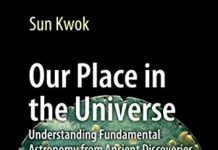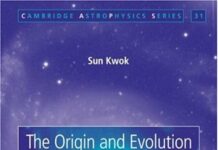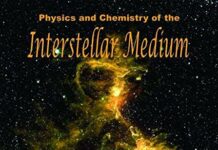
Ebook Info
- Published: 2013
- Number of pages: 289 pages
- Format: PDF
- File Size: 3.67 MB
- Authors: Sun Kwok
Description
How did life originate on Earth? For over 50 years, scientists believed that life was the result of a chemical reaction involving simple molecules such as methane and ammonia cooking in a primordial soup. Recent space observations have revealed that old stars are capable of making very complex organic compounds. At some point in their evolution, stars eject those organics and spread them all over the Milky Way galaxy. There is evidence that these organic dust particles actually reached the early Solar System. Through bombardments by comets and asteroids, the young Earth inherited significant amounts of stardust. Was the development of life assisted by the arrival of these extraterrestrial materials? In this book, the author describes stunning discoveries in astronomy and solar system science made over the last 10 years that have yielded a new perspective on the origin of life. Other interesting topics discussed in this book The discovery of diamonds and other gemstones in space The origin of oil Neon signs and fluorescent lights in space Smoke from the stars Stardust in our hands Where oceans come from The possibility of bacteria in space
User’s Reviews
Editorial Reviews: Review From the reviews:Selected by Choice magazine as an “Outstanding Academic Title” for 2014“Stardust is a very readable, lucid description of the origins of life, from the standpoint of an astronomer. … Six appendixes, a 10-page glossary, and a 20-page bibliography support the text. Summing Up: Highly recommended. General readers and lower-division undergraduates.” (E. S. Perlman, Choice, Vol. 51 (5), January, 2014) From the Back Cover How did life originate on Earth? For over 50 years, scientists believed that life was the result of a chemical reaction involving simple molecules such as methane and ammonia cooking in a primordial soup. Recent space observations have revealed that old stars are capable of making very complex organic compounds. At some point in their evolution, stars eject those organics and spread them all over the Milky Way galaxy. There is evidence that these organic dust particles actually reached the early Solar System. Through bombardments by comets and asteroids, the young Earth inherited significant amounts of stardust. Was the development of life assisted by the arrival of these extraterrestrial materials? In this book, the author describes stunning discoveries in astronomy and solar system science made over the last 10 years that have yielded a new perspective on the origin of life. Other interesting topics discussed in this book The discovery of diamonds and other gemstones in space The origin of oil Neon signs and fluorescent lights in space Smoke from the stars Stardust in our hands Where oceans come from The possibility of bacteria in spaceAbout the author Sun Kwok is a leading world authority on the subject of astrochemistry and stellar evolution. He is best known for his theory on the origin of planetary nebulae and the death of Sun-like stars. His most recent research has been on the synthesis of complex organic compounds in the late stages of stellar evolution. He is the author of a number of books, including Cosmic Butterflies: The Colorful Mysteries of Planetary Nebulae. About the Author Sun Kwok is a leading world authority on the subject of astrochemistry and stellar evolution. He is best known for his theory on the origin of planetary nebulae and the death of Sun-like stars. His recent research has been on the topic of the synthesis of complex organic compounds in the late stages of stellar evolution. He is the author of a number of books, including Cosmic Butterflies : The Colorful Mysteries of Planetary Nebulae. Read more
Reviews from Amazon users which were colected at the time this book was published on the website:
⭐With my grandson coming, it was a good time to read & get caught up on the subject matter that interests him. I sent him the same book so we will have much to discuss
⭐Stardust is the second of this kind of book I have recently read (The Stardust Revolution by Berkowitz is the other). Stardust is an excellent, fascinating, and superbly written book and well worth reading. It is written for anyone interested in astrobiology. I gave it five stars because it was a real mind opener–lots of good material. In a nutshell, the book states that the universe is teaming with complex organic molecules (PAH’s, sugars, amino acids, DNA components, etc.)and non-organic silicates-these are the stardust. These molecules can be found in meteorites, in asteroids, on many other planets and on their moons in our solar system, in nebulae, molecular clouds, comets, interstellar space, the Milky Way, and other galaxies. Water has also proven to be abundant and can be found almost anywhere it is searched for. None of this is hypothetical or theoretical, but is experimentally verifiable and is a generally accept fact by astrobiologists and other scientists.These complex organic molecules(minerals and elements as well)are being manufactured in the outer atmospheres of red giant stars (planetary nebulae-AGB’s) and in novae and they are being produced in massive quantities. The author also indicates that this process has been going on for billions of years before our sun was born. Organic molecules and silicates are being circulated throughout the universe by a variety of mechanisms including meteoroids, asteroids, stellar winds, comets, and super-novae explosions. Biomolecules/organics are literally seeding earth and other planets/moons in our solar system as well as those bodies in other stellar systems.Kwok also discusses the history and development of the astronomical tools which were used to uncover the above findings. The three most important such tools include molecular spectroscopy,radio astronomy,and infrared astronomy; there is really some good info in this section of the material. I am reading this book for the second time. By the way, the other book mentioned above is also very good.You will have to read Stardust to get the exciting details. What Kwok has to say makes life in the universe look like a sure thing. Add to the findings in this book NASA’s recent estimate of 144 billion earth-like habitable planets in our galaxy alone, and you have a recipe for numerous worlds with life.Rich
⭐This book is excellent and very timely in explaining news coming from NASA about the Curiosity rover on Mars.The ” Big Three ” conditions needed for life to start are a liquid medium (usually water), an energy source, andorganic molecules. The first two have been confirmed multiple times on Mars by scientists, but we have yet to findthe third. We know they have arrived on the surface in the billions of tons over the eons, and this book explainsthe sources of those organic molecules. Harsh conditions on Mars may have destroyed most of these molecules,but if we are lucky, Curiosity may find traces inside of rocks or in protected niches.Much of the contents of this book will be very new and exciting to the average scientifically-oriented person.
⭐Very interesting book
⭐The origin of life has been debated for as long as our existence. Most literatures treat this as a remote topic and such approach makes it extremely difficult for the layman. I am very glad that the author has chosen to put forward this difficult subject in such approach that, I believe, most of us can readily understand.In each chapter of Stardust: The Cosmic Seeds of Life, the author starts by drawing our attention to daily life experiences which are related to what comes next, before going into his main topic. It is this approach that makes the book interesting to read.Then, at the end of each chapter, the author put up a brief summary of the essential points before challenging the reader with several “problems”. These problems serve to trigger the reader to think much deeper, rather than simply “swallow” what is taught from the contents. From my feeling, this section makes this books stand out from others, and vividly demonstrates that the author is not just an authoritive expert on this subject, but also an experienced educationist. To quote W.B Yeats “Education is not the filling of a pail, but the lighting of a fire”. The author will certainly light a fire in many of his readers to pursue this new and exciting subject.
Keywords
Free Download Stardust: The Cosmic Seeds of Life (Astronomers’ Universe) 2013th Edition in PDF format
Stardust: The Cosmic Seeds of Life (Astronomers’ Universe) 2013th Edition PDF Free Download
Download Stardust: The Cosmic Seeds of Life (Astronomers’ Universe) 2013th Edition 2013 PDF Free
Stardust: The Cosmic Seeds of Life (Astronomers’ Universe) 2013th Edition 2013 PDF Free Download
Download Stardust: The Cosmic Seeds of Life (Astronomers’ Universe) 2013th Edition PDF
Free Download Ebook Stardust: The Cosmic Seeds of Life (Astronomers’ Universe) 2013th Edition


